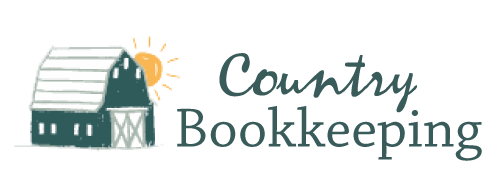Summertime can be a challenging season for many businesses, especially those in the retail and hospitality industries. While the warmer weather often brings more customers through the door, it can also increase costs and create operational headaches. To maximize profits during this busy season, it’s important to have a plan in place that balances revenue growth with cost control. In this article, we’ll explore some strategies for keeping costs down while still delivering exceptional service to your customers. From inventory management to staff training, these tips can help you make the most of the summer season.
1. Understanding the seasonal impact on your business
Recognizing seasonal trends and how they affect your bottom line
As the temperature rises during the summer months, businesses in industries such as hospitality, recreation, and retail typically experience an uptick in demand. Conversely, other industries such as construction and heating often experience a slowdown. Understanding these trends and how they impact your business is critical to maximizing profits while keeping costs down.
Anticipating changes in customer demand
One key to anticipating changes in customer demand is to examine data from previous summers. This helps identify which products or services were most popular and which ones were not. It also helps to monitor current events and holidays that could impact demand. Anticipating changes in customer demand allows you to adjust staffing, inventory, and marketing strategies accordingly.
2. Identifying cost-saving opportunities
Evaluating overhead costs and looking for ways to reduce them
Reducing overhead costs is a crucial element in keeping your bottom line healthy. One way to achieve this is to evaluate expenses like rent, utilities, and insurance to see where you can reduce costs. This could mean renegotiating your current contracts or finding new vendors who offer more competitive pricing.
Reviewing vendor contracts and renegotiating terms
Another way to keep costs down is by reviewing vendor contracts, such as those for product or supply purchases, to see if you can negotiate better terms. This could mean purchasing in bulk to receive discounts, or asking for extended payment terms.
3. Implementing a lean inventory strategy
Tracking sales data to avoid overstocking
Tracking sales data can help you avoid overstocking. This means you only purchase the necessary amount of inventory to meet customer demand while minimizing spoilage and waste. Use your sales data to make accurate predictions about the products or services that are most in demand, and adjust your inventory accordingly.
Minimizing waste and spoilage
Minimizing waste and spoilage not only saves you money, but it also reduces your environmental impact. This can be achieved by implementing systems to track expiration dates, managing inventory turnover, and optimizing food and beverage preparation processes.
4. Marketing strategies for summer
Creating seasonal promotions and specials
Marketing strategies are essential to attracting and retaining customers during the summer months. Creating seasonal promotions and specials that are tailored to your customers’ interests can generate a buzz and increase customer traffic. For example, restaurants could offer a summer menu or host a summer-themed event.
Utilizing social media to reach a wider audience
Social media is an effective tool to reach a wider audience with your marketing efforts. During the summer months, social media can be used to showcase your business’s summer offerings and promotions, as well as engage with customers through interactive content like contests and giveaways. It’s important to have a strong social media presence to connect with potential customers and build loyalty with current ones.5. Leveraging technology for operational efficiency:
The summertime is a busy season for most businesses, and managing transactions and routine tasks can be overwhelming. Investing in a point-of-sale (POS) system can streamline transactions, reduce wait times, and increase customer satisfaction. Automating routine tasks using software like scheduling and inventory management can save time, improve accuracy, and reduce errors. By leveraging technology, you can increase operational efficiency and optimize profits.
6. Training and empowering your staff:
Your employees are the backbone of your business, and providing them with the tools and knowledge they need to excel is key to maximizing profits. By encouraging a culture of efficiency and cost-consciousness, you can help your team understand the importance of keeping costs down while maximizing revenue. Empowering your staff with decision-making abilities can also increase their engagement and satisfaction, leading to better customer service and increased profitability.
7. Monitoring and adjusting your performance:
Measuring your success is essential to optimizing profitability. Tracking key performance indicators (KPIs) like sales, expenses, customer satisfaction, and employee productivity can provide valuable insights into which areas of your business are performing well and which need improvement. Making data-driven decisions based on these KPIs can help you adjust your operations and marketing strategies to improve profitability.
8. Planning ahead for next summer:
Maximizing profits in the summertime requires planning ahead. Building on lessons learned from the previous year can improve next year’s operations. Analyzing trends and anticipating future consumer behaviors can help you prepare accordingly and stay ahead of the competition. By planning ahead, you can ensure that your business is well-positioned to succeed in the coming year while maximizing profits and minimizing costs.By implementing these strategies, you can optimize your operations and maximize your profits this summer. Remember to stay vigilant and keep a close eye on your costs, while still delivering an exceptional customer experience. With the right approach, you can make the most of the seasonal uptick in business and set your company up for success in the months and years to come.
FAQ
1. How can I identify which costs to cut during the summer season?
It’s important to closely examine your overhead expenses and look for inefficiencies that can be streamlined. This could include renegotiating vendor contracts, reducing waste and spoilage, or automating routine tasks.
2. What is a lean inventory strategy and how can it help my business?
A lean inventory strategy is all about optimizing your product offerings to meet customer demand without overstocking. By analyzing sales data and keeping a closer eye on your inventory levels, you can avoid tying up money in excess stock that may not sell.
3. What should I do if my business is experiencing a sudden increase in demand during the summer?
It’s important to have a plan in place to handle sudden spikes in customer traffic. This could include cross-training employees to handle multiple roles, investing in a point-of-sale system to speed up transactions, and bringing on temporary staff to handle the extra workload.
4. How can I prepare for next summer season in advance?
Reviewing sales data and customer feedback from the previous summer can help you identify areas for improvement and make adjustments for the next year. It’s also important to stay up-to-date on industry trends and anticipate changes in customer behavior to stay ahead of the curve.

